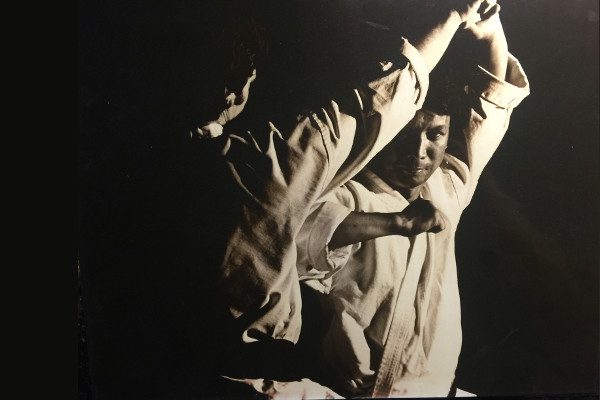The Concept of Japanese Karate

Welcome to the JKA•WF America blog.
Our first post is an article from one of the founders of JKAWFA and my Sensei - Shojiro Koyama Sensei. Koyama Sensei held annual karate championships, the Western States Karate Championships for fifty years. Koyama Sensei's objective and purpose of this tournament were many folds. He wanted to show real Japanese Karate, provide cultural exchange, non profit and support of a community charity, and produce a tournament program to express his philosophy about Karate, life, health, and much more.
In honor of Koyama Sensei, I will be publishing many of his articles from the Western States Tournament Programs.
I started with Koyama Sensei in 1969, and we have traveled on a long journey together, and I want to help ensure that his legacy and philosophy, and thoughts continue.
I hope you all enjoy these articles that he wrote and that future generations will continue down the road of true Karate Dô.
Oss,
Chuck Coburn
Executive Director JKA•WF AMERICA
Tele / Text 480-345-6275
www.JKAWFAMERICA.com
The Concept of Japanese Karate
By: Shojiro Koyama
In 1922 Karate was introduced in Tokyo by Gichin Funakoshi of Okinawa. Funakoshi’s Karate inherits the spirit of “Mind and Technique” embodied in other martial arts which already existed in Japan, such as Kendo, Sumo, and Budo. Karate was filtered through the quintessence of the spirit of the warrior who had survived life and death experiences on the battlefield. One must realize that the rules and regulations of present-day Karate were developed within the context of such solemn historical tradition. When considering this background, it is natural to find in Karate the emphasis on kime, or focus. When exposed to death on the battlefield, one can only survive by fighting with desperate determination and consuming desire to fell the enemy. This sort of mounted tension is compared to focus. The performance of Karate should be surrounded by the same atmosphere of tension. All tournaments should have, in essence, high standards of conducts dignity, solemnity and decorum, because this is what distinguishes Japanese style Karate from leisure oriented sports.
Those who are just starting, particularly the young, should recognize and place great importance on the character-building quality that Japanese style Karate has to offer. One must keep strictly to the “three fundamentals in one unit” training method of Basics, Kata, and Kumite. This repetitive type of vigorous training adds great strength to the hips and legs.
Karate-do has important biochemical effects as well. Research in Molecular Biology indicates that exercise increases the levels of endorphins, a chemical produced in the brain which has a natural tranquilizing effect on the body. The strenuous application of Karate is capable of producing “runner’s high,” a phenomenon reported by long distance runners wherein one pushes through the wall of exhaustion to get a second wind and experience a sense of euphoria. Body chemistry has an important impact on such things as the individual’s level of pain endurance, and ability to overcome obstacles. Although scientific research has not established the connection between endorphin levels and the practice of Karate, I believe that the intense exertion of fifty or more repetitions of Heian Shodan in thirty minutes produces the same increase in endorphins as marathon running. The regular physical discipline that characterizes Karate is also important in enabling one to overcome obstacle in life itself. In a sense the tournament becomes a microcosm of the world because we face there the same complications and psychological barriers as in everyday living and striving. In the arena, one must face his fears of an opponent’s size, and fear of failure. It is essential to set regulations and controls such as the two-minute/one- point system, and not segregate participants into different weight categories. The facing and overcoming of obstacles and stress activate central system functions resulting in biochemical changes, such as the Endorphins release.
The promotion of Karate as a leisure sport is a very important aspect of cultural exchange between the United State and Japan, and, intros sense, should be open to any and all participants. In another, even more important aspect, however, Karate offers the opportunity for instilling leadership and character development. In this latter sense it is essential to continue the idealism of Karate-Dô and pass it on to future generation. As we approach the 21st century, it must be our mission prom one Karate-do not only as a sport, but more importantly as a basis for the molding of character.
